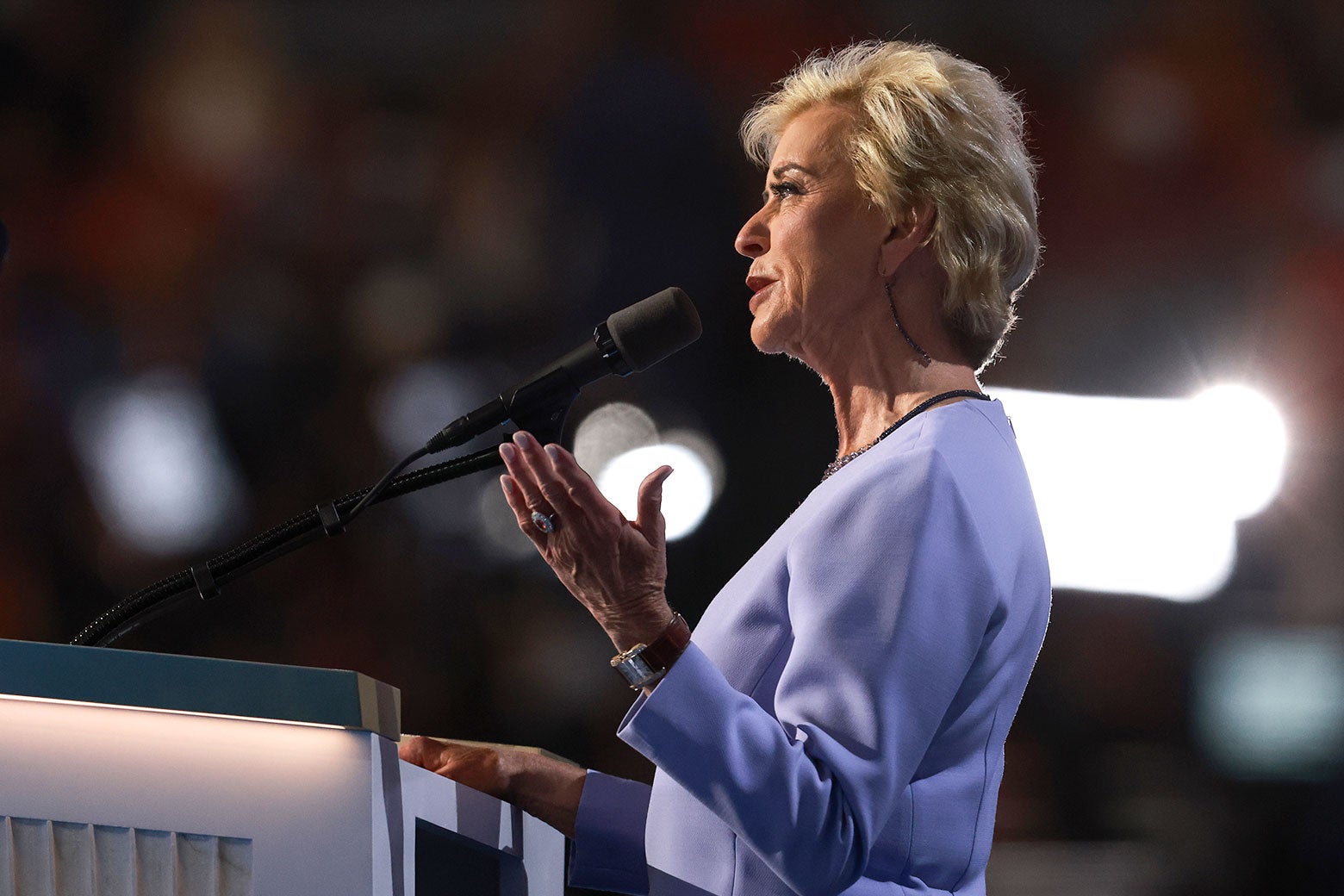Entertainment
Trump’s WWE Ally Proposes Controversial Vision for American Schools

Donald Trump’s Cabinet choices have stirred significant discussion, particularly regarding what Linda McMahon aims to accomplish as the new Secretary of Education. With her unconventional background and the echoes of Trump’s prior administration still resonating, expectations about educational reforms are mounting. During his announcement about McMahon’s selection, discussions surfaced about rekindling the Founding Fathers’ vision for public schools, a notion that’s received enthusiasm from Trump supporters but is fraught with potential pitfalls.
McMahon, who previously led the Small Business Administration, has already established her stance on education—prioritizing “apprenticeships” as a pivotal reform. Her organization, America First Policy Institute, promotes education through the lens of workforce innovation, advocating for a seamless connection between education and the job market. Interestingly, like Betsy DeVos, Trump’s first education secretary who lacked traditional educational experience, McMahon’s credentials stem from her time as the chief of World Wrestling Entertainment, positioning her as an outsider to the education sector.
If confirmed, McMahon’s policies could dramatically shift funding away from public schools towards private institutions, paralleling views that claim this realignment reflects a return to the education system envisioned by America’s founders. Yet, history presents a stark contrast to these romanticized notions. The reality during the period following the Revolution was characterized by a chaotic educational landscape, where local control and market forces left many children undereducated and struggling. A troubling foundation existed, especially for enslaved Black children, who were often outright barred from receiving any formal education, while free Black children faced severe restrictions too.
The educational plight was shared among many as reformers like Horace Mann highlighted the shortcomings of the system. His initiatives underscored the scarcity of educational facilities—with a significant percentage of children unable to access schooling. The statistics were sobering: in Massachusetts during the late 1830s, more children existed than available schooling, and in rural areas like Georgia, public school accessibility was even bleaker.
Beyond statistics, poignant narratives reveal the frustrations of children yearning for knowledge but hindered by the limitations of their environment. Many children spent more time working than learning—a trend that saw the majority of young boys engaged in labor while girls often took on unpaid responsibilities at home, suppressing their educational aspirations.
Education often came at a price, wherein private schooling options were scarce and expensive, forcing families to choose between affordable public education and costly alternatives. Even where apprenticeships thrived as career pathways, experiences varied significantly based on socioeconomic status.
Fast forward to today, and child labor laws have evolved, bolstering protections that were once nonexistent. However, echoes of the past remain as labor demands continue, particularly for marginalized groups who still face exploitation. The concern looms large that a McMahon-led Education Department might mirror historical mistakes, placing vulnerable kids in perilous situations where businesses prioritize profit over genuine educational growth.
Predictions are rife that McMahon will champion the America First Policy Institute’s vision for “scholarship awards,” aimed at subsidizing K-12 education expenses. Observations from red states provide a cautionary tale. In Texas, attempts to endorse a voucher program resulted in strong intra-party resistance, revealing fears of returning to a fractured educational system reminiscent of the 1800s—one that could leave rural residents with inadequate schooling options.
Texas families confronted painful realities where voucher programs threatened to drain public school funds. The intended promise of choice proved illusory, especially in less populated areas, where the cost discrepancy between public and private education further complicated access to quality schooling.
Ultimately, the ongoing struggle emphasizes a collective reliance on public schools across the political spectrum. Generations of evolving lessons have surfaced, underscoring that only a publicly funded education system can reliably serve all children, while the notion of leaving education to the whims of employers can exacerbate inequality.
As the prospect of McMahon’s leadership emerges, the fears around a potential dismissal of these hard-won lessons linger ominously, posing serious risks for the future educational landscape, and indeed, for everyone involved.
